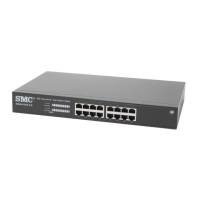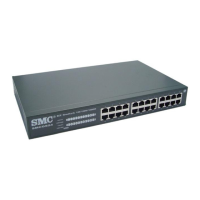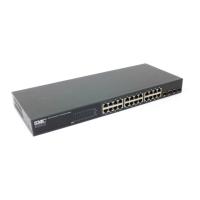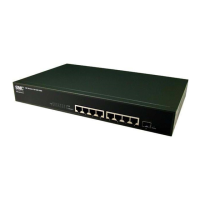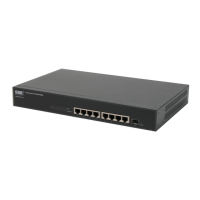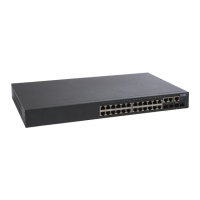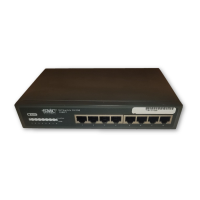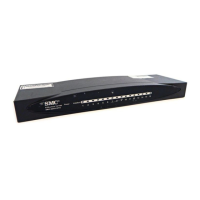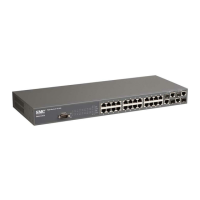C
HAPTER
4
| Configuring the Switch
Link Layer Discovery Protocol
– 147 –
◆ Tx Hold – Configures the time-to-live (TTL) value sent in LLDP
advertisements as shown in the formula below. (Range: 2-10;
Default: 3)
The time-to-live tells the receiving LLDP agent how long to retain all
information pertaining to the sending LLDP agent if it does not transmit
updates in a timely manner.
TTL in seconds is based on the following rule:
(Transmission Interval * Transmission Hold Time) ≤ 65536.
Therefore, the default TTL is 30*3 = 90 seconds.
◆ Tx Delay – Configures a delay between the successive transmission of
advertisements initiated by a change in local LLDP MIB variables.
(Range: 1-8192 seconds; Default: 2 seconds)
The transmit delay is used to prevent a series of successive LLDP
transmissions during a short period of rapid changes in local LLDP MIB
objects, and to increase the probability that multiple, rather than single
changes, are reported in each transmission.
This attribute must comply with the rule:
(4 * Transmission Delay) ≤ Transmis si on Inter val
◆ Tx Reinit – Configures the delay before attempting to re-initialize after
LLDP ports are disabled or the link goes down. (Range: 1-10 seconds;
Default: 2 seconds)
When LLDP is re-initialized on a port, all information in the remote
system’s LLDP MIB associated with this port is deleted.
LLDP Interface Attributes
◆ Port – Port identifier.
◆ Mode – Enables LLDP message transmit and receive modes for LLDP
Protocol Data Units. (Options: Disabled, Enabled - TxRx, Rx only,
Tx only; Default: Disabled)
◆ CDP Aware – Enables decoding of Cisco Discovery Protocol frames.
(Default: Disabled)
If enabled, CDP TLVs that can be mapped into a corresponding field in
the LLDP neighbors table are decoded, all others are discarded. CDP
TLVs are mapped into LLDP neighbors table as shown below:
■
CDP TLV “Device ID” is mapped into the LLDP “Chassis ID” field.
■
CDP TLV “Address” is mapped into the LLDP “Management Address”
field. The CDP address TLV can contain multiple addresses, but only
the first address is shown in the LLDP neighbors table.
■
CDP TLV “Port ID” is mapped into the LLDP “Port ID” field.
■
CDP TLV “Version and Platform” is mapped into the LLDP “System
Description” field.
■
Both the CDP and LLDP support “system capabilities,” but the CDP
capabilities cover capabilities that are not part of LLDP. These
capabilities are shown as “others” in the LLDP neighbors table.
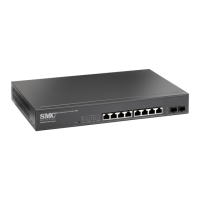
